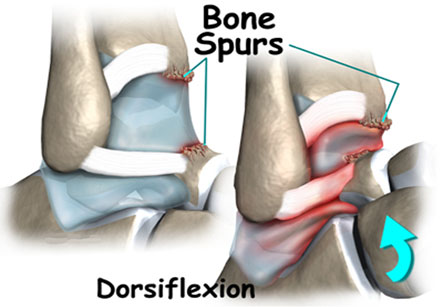Bone Spur
Introduction
A bone spur is an outgrowth of bone which can occur along the edges of a bone. It is also called an osteophyte. Bone spurs are can form in any bone, but are most commonly found in joints. They also occur where muscles, ligaments, or tendons attach to the bone.
Most common parts of body affected by bone spurs are:
1. The neck (cervical spine)
2. Low back (lumbar spine)
3. Shoulder
4. Knee
5. Foot
6. Heel
We have all the information you need about public and private clinics and hospitals that provide spinal surgery in Iran, Islamic Republic Of with the best quality and lowest possible prices

The spurs themselves are not painful. Their pressure on nearby structures such as nerves and the spinal cord can cause pain.
Our spines are made up of 33 bones (vertebrae) which are designed to protect the spinal cord. Gel-filled discs between the bones serve as shock absorbers. The discs also allow mobility while bending forwards and backwards and twisting the back in various directions.
Behind each disc and under each intervertebral joint are openings that allow the nerve roots to leave the spinal cord to go to other parts of the body. Bone spurs can be a problem if they develop in the openings for the nerve roots. The space can become narrower and the spur can press on the nerve.
Symptoms:
Back or neck pain is the most common symptom of bone spurs. Other symptoms are:
1. Burning or tingling sensation in the hands or feet
2. Dull pain in the neck or lower back while standing or walking
3. Loss of coordination
4. Muscle spasms or cramps
5. Weakness in muscles
6. Numbness
7. Radiating pain in the buttocks and thighs (if the affected bone is in the back or lower back)
8. Radiation of pain into the shoulders or headaches (if the affected bone is in the neck)
9. Worsening of pain on activity and relief of pain on resting.
10. If there is severe pressure on the nerves, a person may have problems controlling his or her bladder or bowels.
Causes and Risk Factors
There is a variety of factors that contribute to bone spurs. These include:
1. Aging. As the discs wear down, ligaments get looser and joint stability is reduced. The body tries to thicken the ligaments to hold the bones together. Over time, the thickened ligaments start forming flecks of bone that cause pressure on nerve roots.
2. Degeneration of disc or joint
3. Heredity
4. Injuries, including sports-related and motor vehicle accidents
5. Poor posture
6. Structural deformities from birth.
In addition, certain conditions can make it more likely that bone spurs will develop, including:
1. Arthritis
2. Osteoarthritis
3. Spinal stenosis
There are other rare medical conditions that are associated with bone spurs. These include a condition known as plantar fasciitis, which is an inflammation of the fascia or connective tissue attached to the heel or calcaneus bone. Diffuse idiopathic skeletal hyperostosis (DISH) and ankylosing spondylitis are both inflammatory disorders that affect various ligaments of body and can cause bone spurs in the spine.
Diagnosis
Firstly, the doctor elicits complete medical history and performs thorough physical examination of the patient. This can help the physician to rule out other conditions that may have similar symptoms but different causes.
Tests that a doctor may order include:
1. Electroconductive tests. These show the degree and seriousness of the spinal nerve injury.
2. Computed tomography (CT) scans
3. Magnetic resonance imaging (MRI)
4. X-rays to highlight any bone changes
Treatment
Several approaches are recommended for treatment depending on the severity of the symptoms.
For persons with mild to moderate pressure symptoms, a conservative approach of management is advised. This may include:
1. Cortisone injections to help reduce joint inflammation, swelling and pain. The effects of these injections are temporary and may need to be repeated.
2. NSAID’s to reduce swelling and pain
3. Muscle relaxants
4. Physical therapy and manipulation of joints – this is done to restore flexibility and strength of joint, improve posture and reducing the pressure on the nerves.
5. Rest
This approach is tried for about 4 to 6 weeks. If all the conservative treatments fail, surgery may be needed, such as a laminectomy to remove bone spurs.